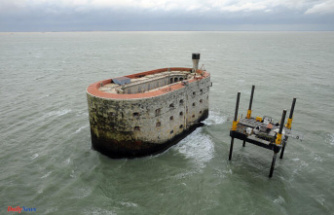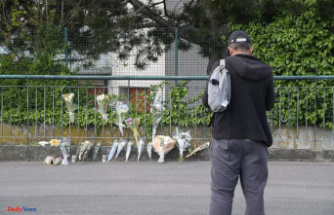As the number of connections increases, so does the risk of problems when traveling by air. We asked an expert how to prevent it - and what vacationers can do if the plane takes off without them.
Handling chaos, delays, cancellations, missing suitcases: Air travelers have needed good nerves lately - and probably still need them, although there are slowly signs of relaxation.
Holidaymakers can hardly influence the sometimes tricky processes at the airlines and at the airport. The situation is different with the choice of flight connection. And while packing the suitcase. Laura Frommberg, editor-in-chief of the specialist magazine "Aerotelegraph", explains how to get to your destination with less stress.
How much transfer time should travelers allow to reach their connecting flight?
Laura Frommberg: You have to differentiate at which airports you change trains. There are airports with very long distances. It can be that you have to travel a really long time to get from one gate to the next. If you only have 20 minutes left after the first flight is delayed, things can get tight.
If the airline knows that passengers are changing planes, they usually take this into account when booking. In addition, connecting flights sometimes wait if flight planning allows it. And sometimes the connecting flights are delayed and you get the flight. But I wouldn't count on that.
I would currently not recommend less than an hour transfer time. Better around two hours. Personally, I prefer to have more time in between at the airport and work there, for example.
Should you book a trip with connecting flights at all, or would it be better to book the more expensive direct flight?
This of course depends on the budget. And even if you're currently hearing a lot about chaos and luggage that doesn't arrive, you can basically rely on getting to your destination. I recommend vacationers that they simply have to bring a lot more time, patience and understanding and be prepared that there may be a few hurdles on the journey. It helps to mentally prepare for it.
I would also pack the most important things like a toothbrush and a few clothes in my hand luggage in case the suitcase arrives later. I always pack in such a way that I can last a night or two in a hotel. If you are traveling as a family, for example, it helps to distribute the most important things for everyone in the group to all suitcases. If a suitcase is lost, not one person is left without clothes.
If you don't fly regularly and are therefore a little unsure and have the choice of changing planes at a smaller airport or at a large hub such as Frankfurt or London Heathrow, it is best to fly via smaller airports with less travel traffic. There, the distances are shorter and there tends to be less going on - and that means less potential for chaos.
Despite all the prudence and planning, the plane takes off without one. What should travelers do now?
I recommend downloading the airline's app because information such as irregularities and gate changes is quickly updated there. This is the fastest way to be informed. If there is nothing in the app, I would always seek personal contact with an airline employee at the airport. When in doubt, they can help better than a virtual assistant.
If travelers miss their connecting flight through no fault of their own, they are entitled to food, accommodation and, ultimately, to reach their destination. This is regulated in the passenger rights.
(This article was first published on Thursday, August 11, 2022.)












